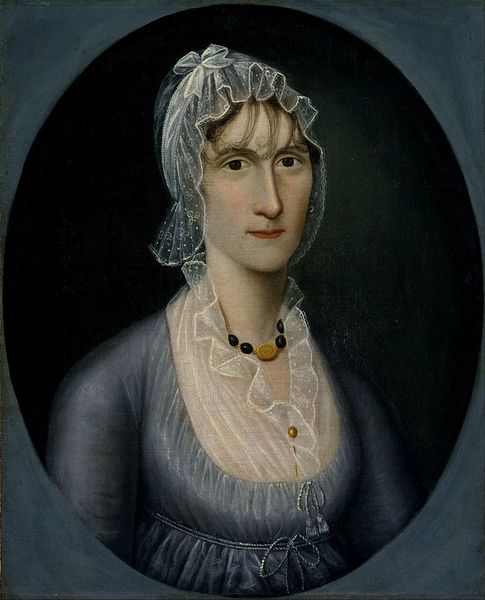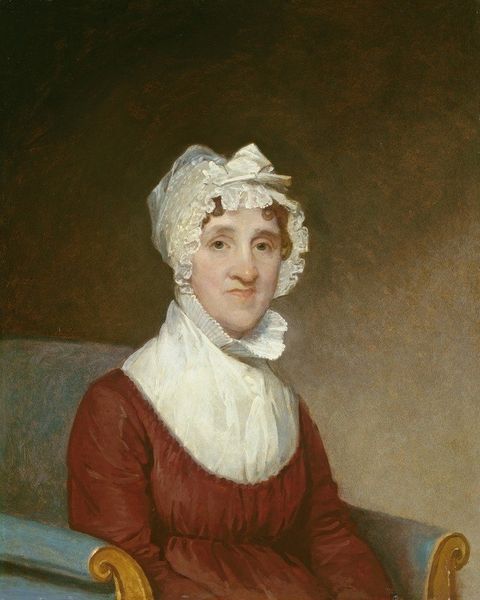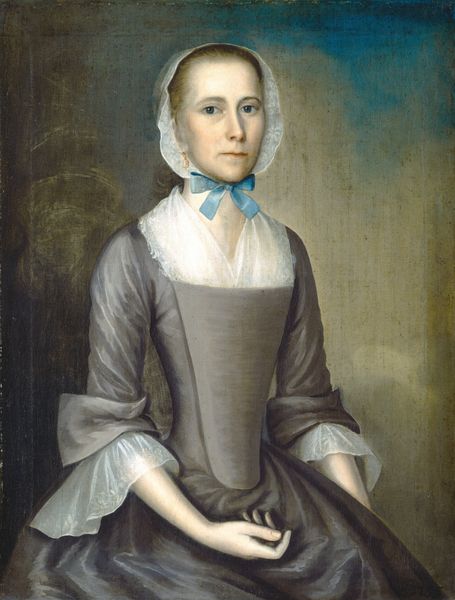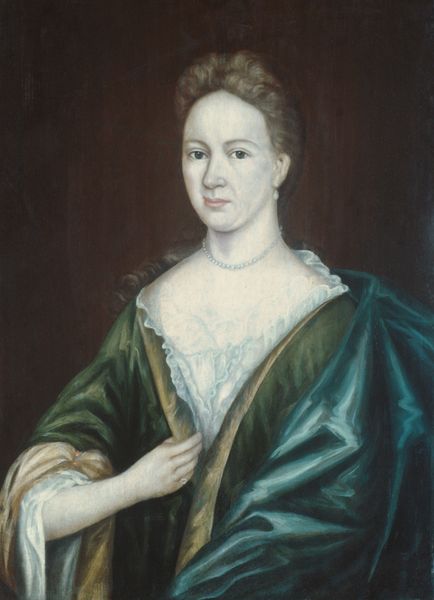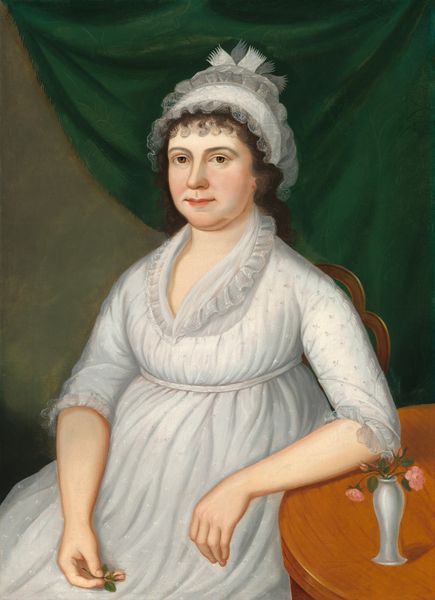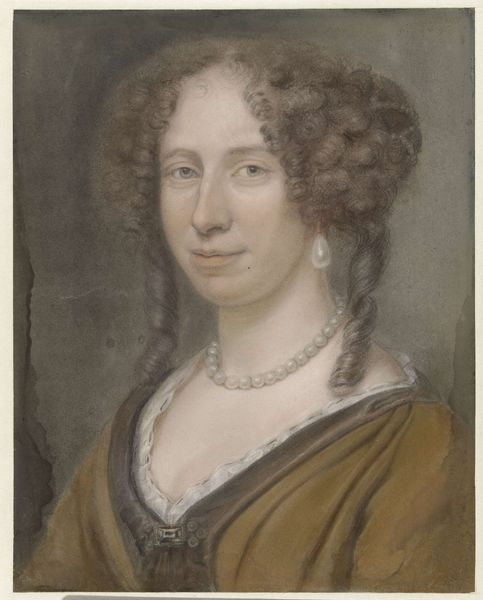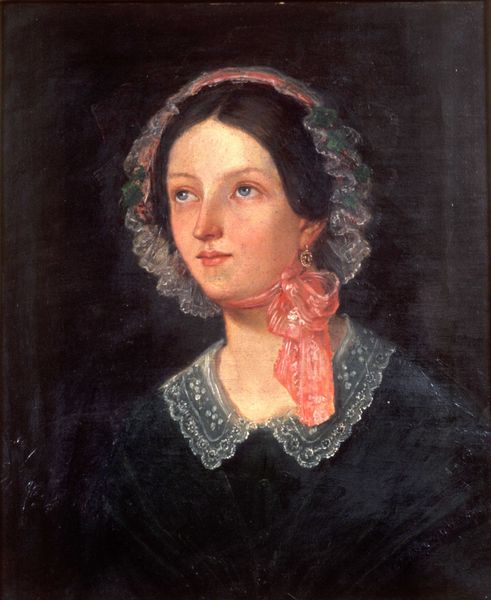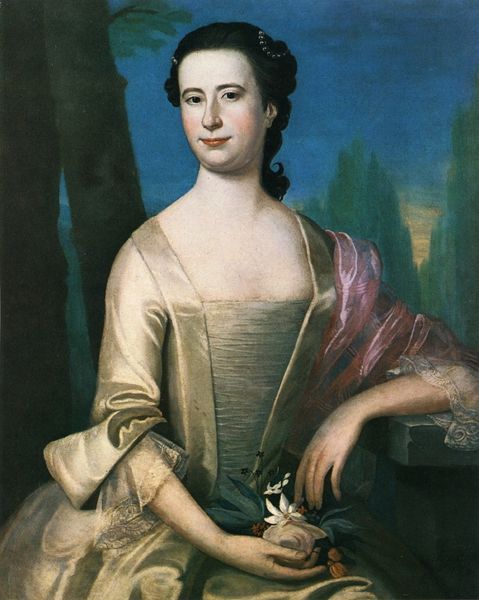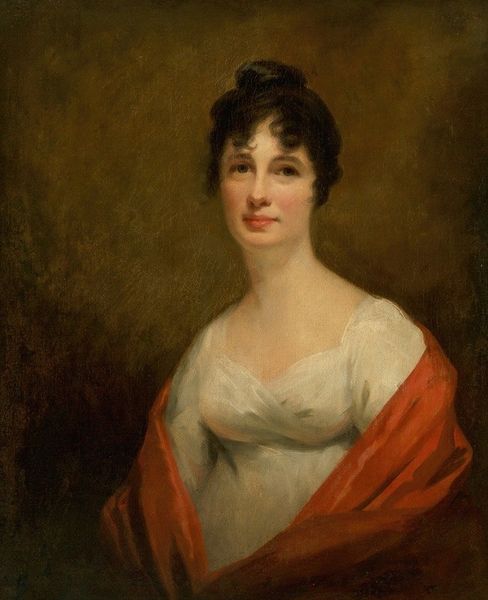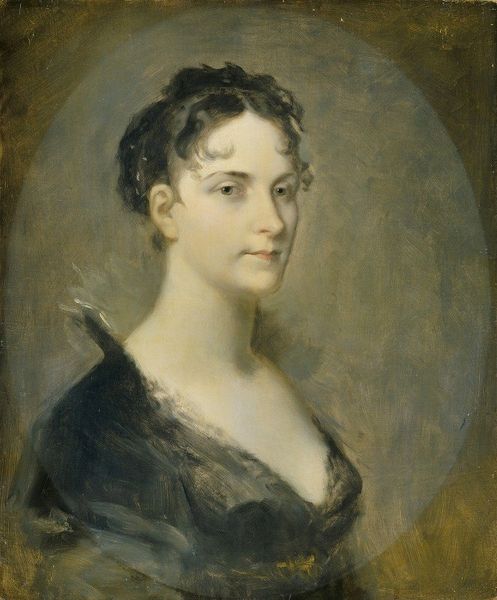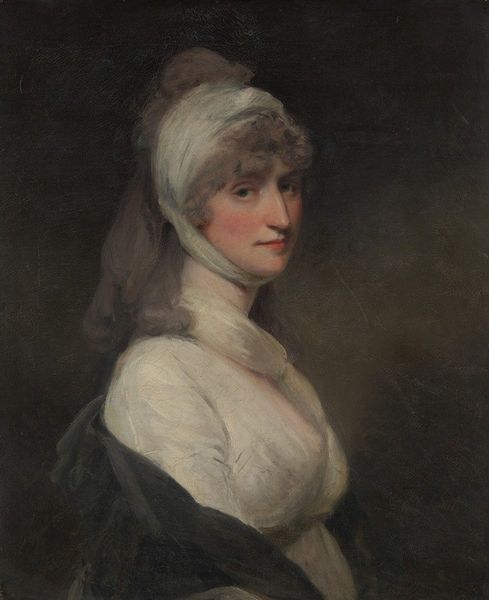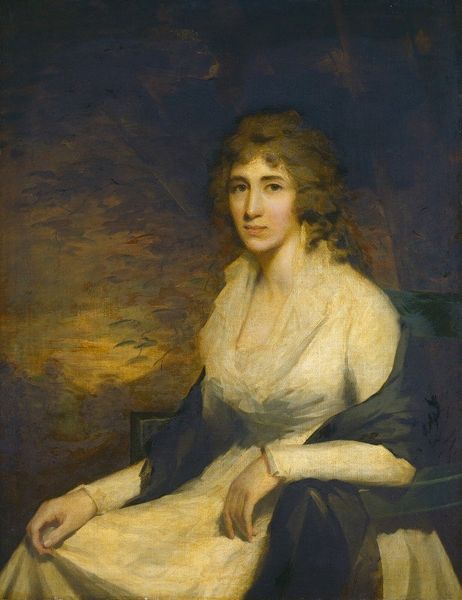
painting, oil-paint
#
portrait
#
neoclacissism
#
painting
#
oil-paint
#
genre-painting
#
academic-art
Copyright: Public domain
Editor: Here we have Joshua Johnson's "Sarah Ogden Gustin," painted around 1805, created with oil paints. The texture of the dress looks quite interesting, especially the lace. What catches your eye about this work? Curator: The way the material qualities speak to class and labor is particularly interesting here. Think about the production of her clothing. The fine lace trim around the neckline and sleeves indicates access to specialized, skilled labor, most likely done by women. What does this say about Sarah Ogden Gustin's status? Editor: So it's not just a pretty detail, but it reveals something about her life? Curator: Precisely. Consider, too, the canvas itself and the pigments used for the oil paint. These materials would have been imported, further signifying wealth and connection to global trade networks. And what about that book and leaf she holds? How are these crafted, presented, what are these representing about her lifestyle, education, or even leisure? Editor: I guess it highlights her refinement, suggesting access to knowledge and nature... a life beyond basic survival. The act of commissioning a portrait itself seems significant, given the cost of both the artist's labor and materials. Curator: Exactly. Johnson, as a relatively unknown portraitist, perhaps catered to a rising merchant class, those who wished to emulate the established elite. Do you think it's accurate to define this work in art history books simply as a neoclassical portrait? Editor: I hadn't considered that before. Thinking about it this way really emphasizes the social and economic context embedded within the very materials and creation of this portrait. Curator: It moves beyond just aesthetic appreciation. The brushstrokes, the texture, and the imported materials all speak volumes about a specific time and place. Editor: Thanks, I see so much more to this painting now than I did initially!
Comments
No comments
Be the first to comment and join the conversation on the ultimate creative platform.
